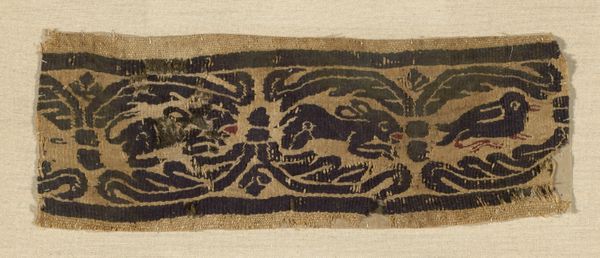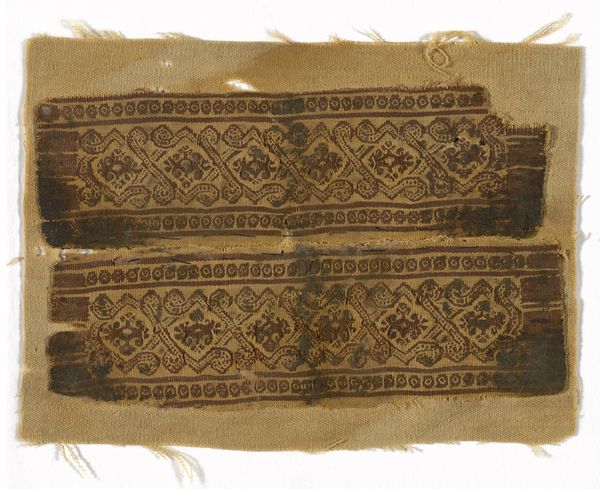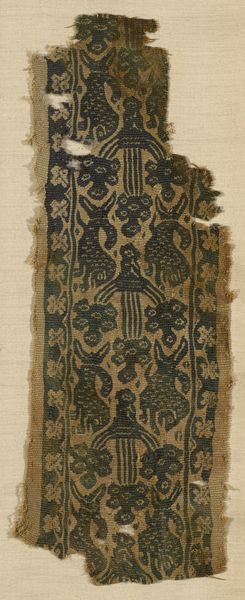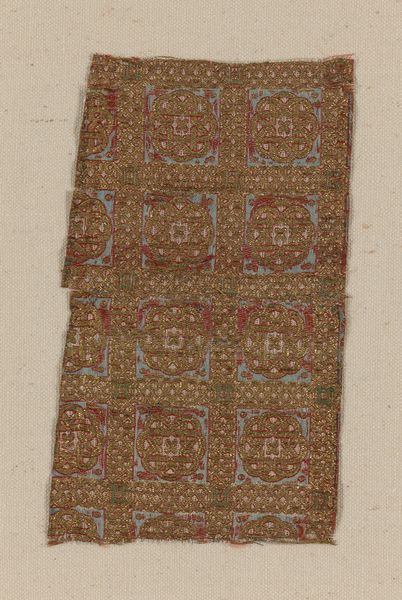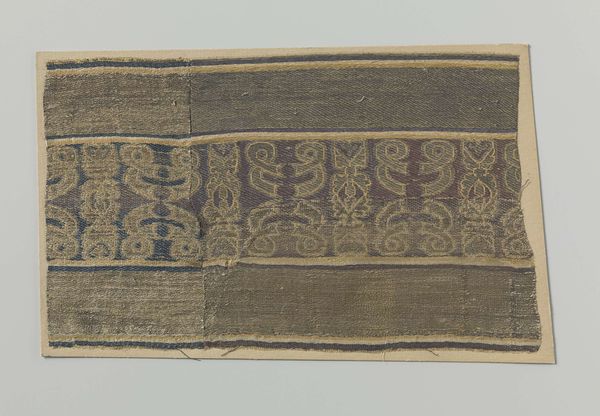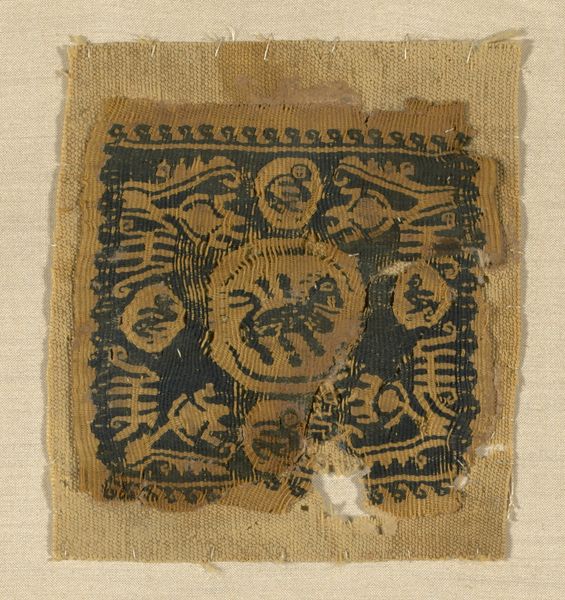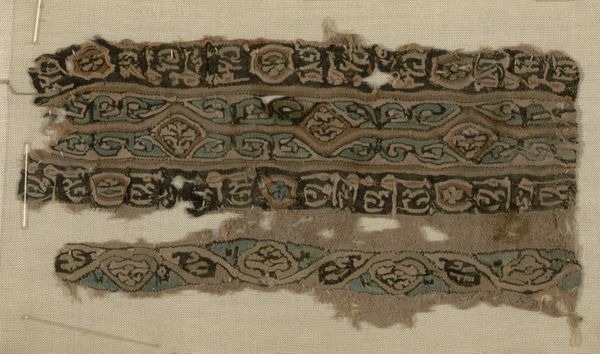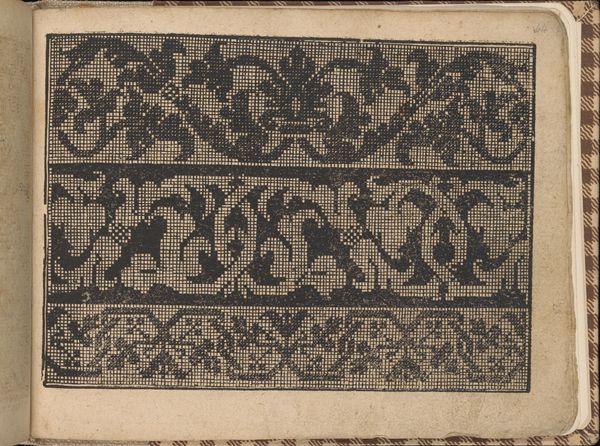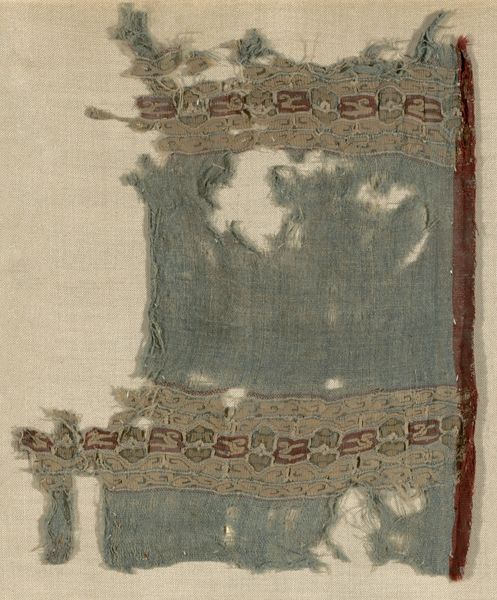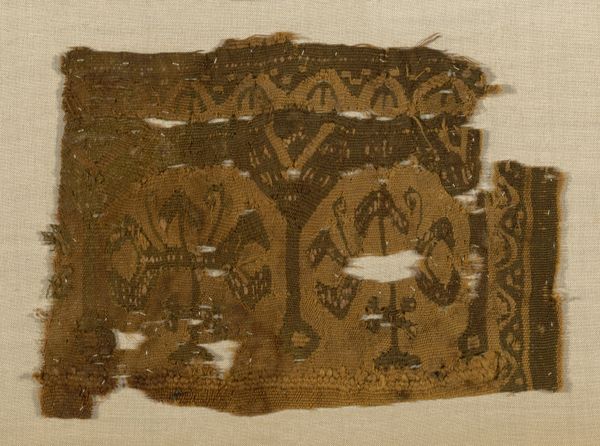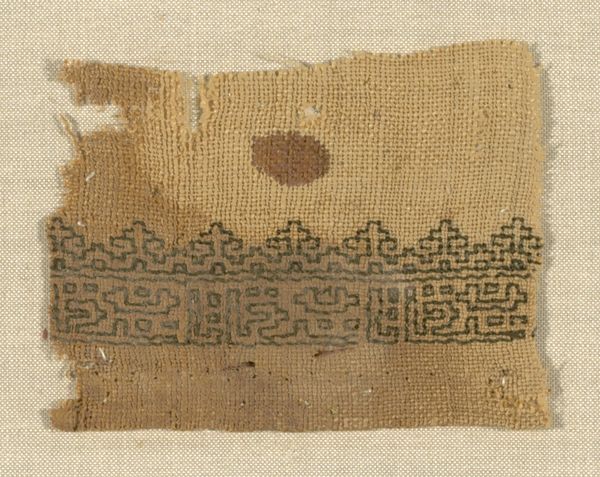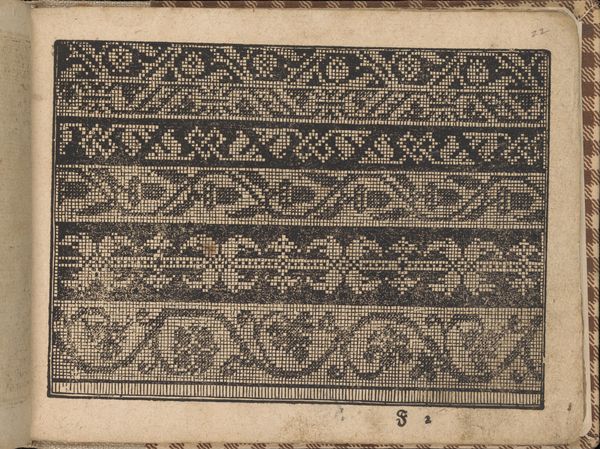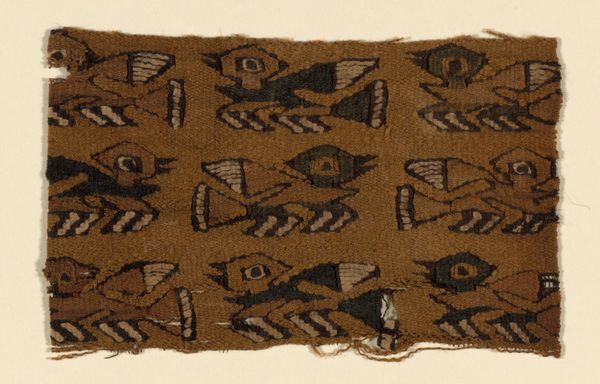
fibre-art, weaving, textile
#
fibre-art
#
weaving
#
textile
#
ancient-egyptian-art
#
egypt
#
ancient-mediterranean
#
line
#
islamic-art
Dimensions: 15.2 × 6.4 cm (6 × 2 1/2 in.)
Copyright: Public Domain
Curator: What strikes me immediately about this woven fragment is its remarkable linear structure. The patterns, rendered in what appears to be dark fibre against a lighter ground, present a stark yet compelling visual dichotomy. Editor: It does have a certain intensity. The shapes feel almost totemic—archaic memories rendered in thread. The animal form, particularly, reminds me of something primal, almost a protective spirit. This piece is called "Border," dating back to the 5th century during the Roman period, and it resides here at the Art Institute of Chicago. Curator: The title "Border" is indeed intriguing when we consider its form. The textile seems to divide into distinct yet connected fields of design, a deliberate articulation of contrasting motifs across its woven surface. The dark framing further emphasizes that bounded space. Editor: Absolutely. Given its origins in Coptic Egypt, it makes me consider how existing iconographies intertwined with the emerging Christian and later Islamic cultures. That floral motif could suggest paradise gardens while the creature... perhaps a survival of older deities in a newly adopted faith. Curator: Intriguing idea. Analyzing the interplay between these visual elements from a purely formal perspective reveals the weaver's masterful control over texture and form. Notice how line weight varies to define specific shapes and create a subtle sense of depth within each field. Editor: True, but there's something else at play, a cultural memory woven directly into the piece. This isn't just decoration; these repeating patterns are the artist speaking to and from something deeply felt, culturally shared. Curator: Do you suggest that beyond being the element separating inside from outside, a functional boundary, that, more significantly, its symbolic context has to do with its function, where forms evoke this transition state? Editor: Precisely! To me it evokes continuity—older meanings adapting, finding new expression, just as those ancient fibres themselves have persisted to tell us stories. Curator: I see your point now. Analyzing the cultural layers gives the work much depth and is interesting as it opens many questions on cultural symbology during this time period. Editor: Yes, even a seemingly simple textile border can act as a powerful mnemonic, a silent storyteller across the ages.
Comments
No comments
Be the first to comment and join the conversation on the ultimate creative platform.
